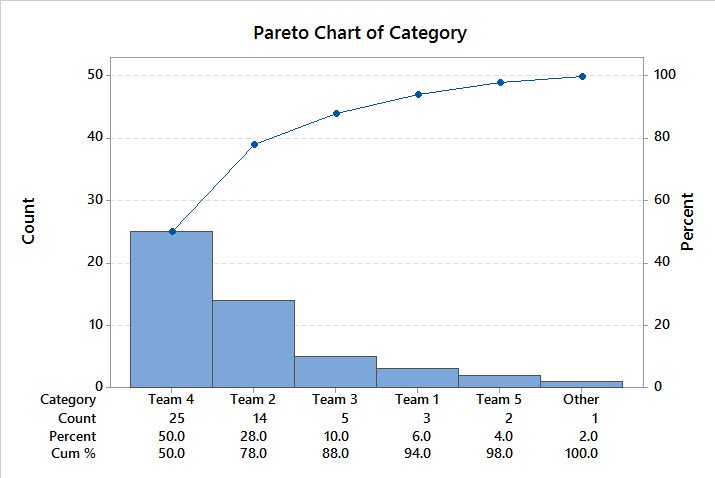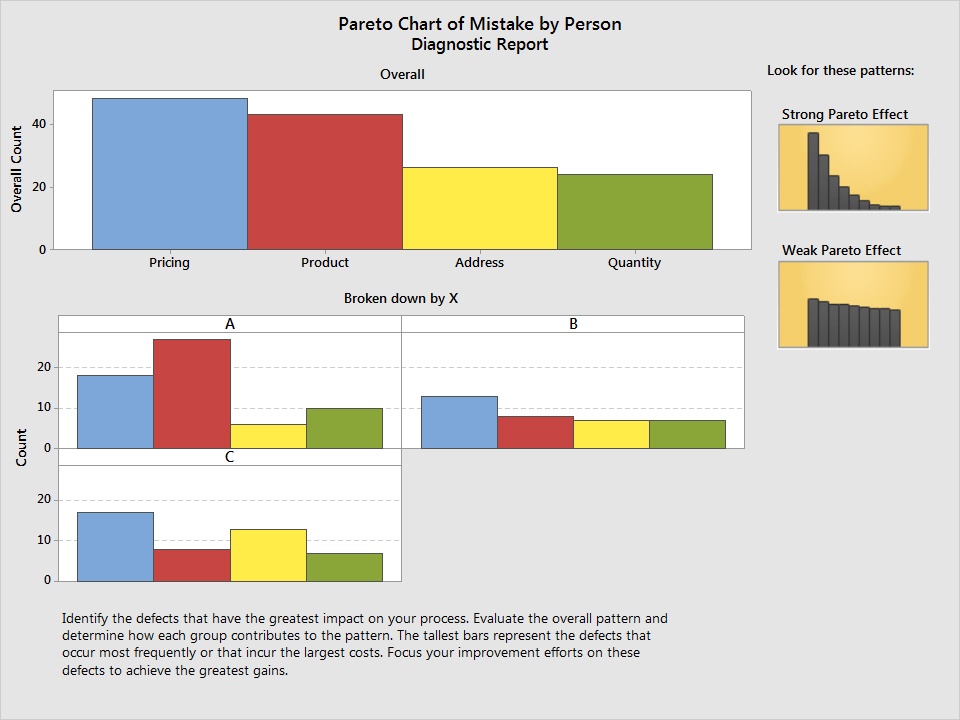
The best tool for understanding the optimal Scope for a Project is the Pareto Chart.The Pareto chart is simple to understand and use however, it is important to consider the following: Each generation of projects are considered their own project. I’m guessing the question that is burning in your mind is “do I have to solve world hunger before I complete my project?” We can even expand our scope to improving several villages at once as we have encountered most of the variables in previous projects. With each generation of projects to solve world hunger, each village gets easier. Once you Improve, Optimize and Control hunger in that small village then you can translate the improvements to the next village in our priority with subsequent “multi-generational projects”. This is where the Pareto Principal of 80/20 comes into play, if you focus on the 20% of your processes that are causing 80% of your problems, you will have a manageable scope for your project, and if successful, will yield the most meaningful results. You can’t solve world hunger, but you have a greater likelihood of success if you focus on one small village. Six Sigma Project Scope are: focus, focus and focus! We teach our students that three of the most important words when it comes to Lean LEAN Definition LEAN is a production method aimed primarily. This eventually leads to a permanently stalled project. Why? Because no one has educated the belt that it is improbable they will solve world hunger. Only about 35% of Six Sigma Projects are completed (and this is a conservative number). Project to Have a Slow Agonizing Death? Not have a manageable scope! What can cause a Six Sigma Six Sigma Definition: Six Sigma is a set of techniques and t. The Pareto Principal (or 80/20 principle) and the importance of Scope

Give each problem a value based on its impact on the business. You can use a number between 1 and 10 or a monetary value to indicate their importance.Ĭreate a plan that focuses on the top 20% of problems that have the greatest impact on your business. One solution can solve multiple problems. Calculate which problems are in the top 20 percent based on the assigned values to each problem. After identifying the problem, create a plan that will solve it using problem-solving strategies. Your problems can be grouped into related categories. You can group the causes of your problems together if they fall under the same categories. This will help you determine if one solution is sufficient to solve multiple problems. Identify the root causes of your problems. Use a tool such as the 5 Whys process to find the cause of all the problems you are trying to solve. Identify the problems your team is facing. This is the problem you are trying to solve in this decision-making process. It can help you prioritize the solutions. These are some steps that will help you understand how it works. The Pareto principle is a way to help you make the right decisions in the problem-solving process. The Pareto principle is useful when there are multiple causes for a problem. framework. The 80-20 Principle is not a law, but an observation. Although it is not always true, the 80-20 and 99-1 distributions are often the most profitable. This is where you can make a lot of money with little effort. within the Lean Six Sigma Six Sigma Definition: Six Sigma is a set of techniques and t. It states that most results are due to a small number of causes or efforts. This is how it fits Fitted values can also be known as fits. The fitted val.

The 80/20 Principle is a scientific law that has been proven to be effective in both business and economics. Tiny amounts of energy can go a long way. The Pareto Principle tells us where the most bang for our buck is.

It all started with Joseph Juran, who introduced quality control in the 1950s. Juran used the 80-20 Principle to identify the most serious and frequent causes of inferior quality. His clients, who were mostly Japanese, advised him to fix them first. They did. They rose from a devastated nation with no exports to become a stronghold in the 1980s. The Pareto principle (or 80/20 principle) and Lean Six Sigma


 0 kommentar(er)
0 kommentar(er)
